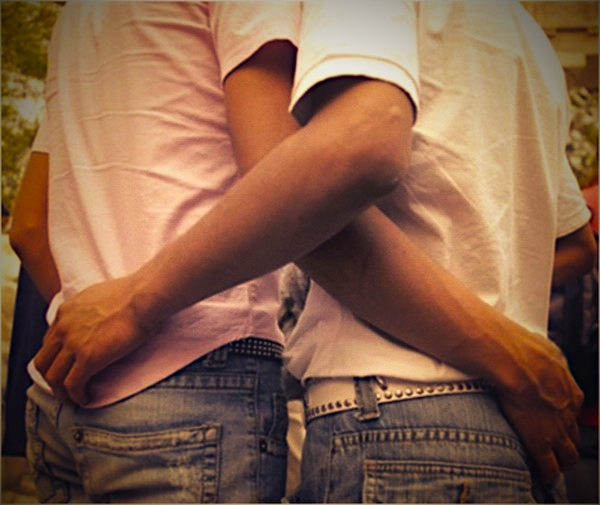I’m a scientist by training and as such, generally avoid public debate, which tends to be dominated by charisma rather than fact. Nevertheless, given the strongly homophobic atmosphere in Sri Lanka two weeks away from what Bill Clinton declared is gay-pride month (my embassy informs me that “Homosexual acts are illegal in Sri Lanka”), I thought it pertinent to share some inconvenient truths from the little-known, less-regarded realm of academic research. Make of them what you will.
1. We’re a lot gayer than we think
The two papers I’d like to share are both loosely to do with sexuality in Sri Lanka. The first is a study of sexual health in tea-plantation populations (Jayasekara et al, 2011) and the second is a detailed study of beach boys and the supposed endemic sexual exploitation of children (Miller, 2011). The aims of these two studies are divergent, focus on two distinct cultures (tea workers and beach boys) and set about proving two different points, but they present data that overlap to an appreciable degree.
Both studies found that among men, first sexual encounters occur as early as at age 12, and the vast majority of those interviewed have had gay sex at least once (86% of tea-estate men and 82% of ‘beach boys’). It seems that (at least) a single gay experience is, by definition, the norm amongst rural Sri Lankan men. The majority of Sri Lankan men are also, then, eligible for imprisonment. I find it intriguing then, that we’re so homophobic. Logically I see two options—we can lock up a substantial proportion of tea-estate workers or admit that the country’s homophobia-augmentation law is just slightly daft.
2. Our bigotry might not be where we expect it
Some unexpected findings of Miller (2011) are that (1) the tendency to conflate homosexuality and pedophilia is best reflected in the activities of child-protection NGOs, which happily lump pedophiles, perverts and homosexuals into a single “deviant” category; (2) Religious charities, too, often try to ‘rehabilitate’ former prostitutes and (sometimes happily married) men to ‘cure’ their deviant traits; and (3) Oftentimes it is sexual health charities trying to lower the incidence of HIV that perpetuate the myths that homosexuality leads to AIDS, and that “if you have AIDS it’s entirely your fault”.
It seems though, that while rural Sri Lanka is happy and gay (pun absolutely intended), it is we urban folk who enjoy sitting at home and basking in our self-righteous bigotry. There really is a wealth of (sometimes rather frightening) information in Miller’s (2011) paper that I couldn’t hope to summarise. I can only encourage my readers to find it themselves.
3. We’re here, we’re queer, and you wouldn’t have guessed it, would you?
As far as I’m aware, I haven’t even a gay friend. I mean I might have—I just haven’t bothered to quiz them all on their sexuality. In fact, I worry about the relative extravagance of the approach of gay activism. The received wisdom seems to be that the way forward at gay-pride rallies is to make as profligate a display as possible about sexuality. Given the choice between the Stephen Fry and Gok Wan models of public perception, it seems to me that gay rallies have chosen the latter. I cannot identify with this.
The problem with the public perception of homosexuality is that in it, gay people are in some way “different”, deviations from the norm. The metaphorical schoolyard bully refers to gay people as poofs, queer, camp, fags, fairies, pixies and a litany of other pejoratives. A question I must ask: is dressing up is assless chaps, leather tights, balls and chains, fairy costumes and thongs before dancing on the street in a shower of glitter… is this helping the schoolyard bully’s case or not? Is this aiding the perception that gay people are “different” or not? In fact, what exactly does it do to further the cause? I don’t have an answer to that last question, which is why I ask it.
Here’s one strategy. Given that at a gay-pride rally the public expects a spectacle of weird, wonderful and rather confronting things, a powerful statement would be made if the next gay-pride rally consisted entirely of participants wearing what they wore to work yesterday. “But how would people know what the rally is even about?” I’m often asked. Exactly. We ought to stop thinking about gay people as glitter bugs and start thinking about them as doctors, engineers, coal miners, hairdressers, politicians, teachers, police officers, pilots, waiters, soldiers and people of every other occupation.
There’s an important distinction between being comfortable with ones sexuality and being overt about it. Most people, heterosexual or not, are uncomfortable with overt sexuality for the same reasons they don’t want their children watching pornography or teenage girls getting boob jobs. Parents ought to be able to look at every participant in a gay pride rally and think to themselves, “I’d quite like that man/woman to be my child’s babysitter, school teacher, gym instructor or cub-scout leader. (S)he’s just like me.”
